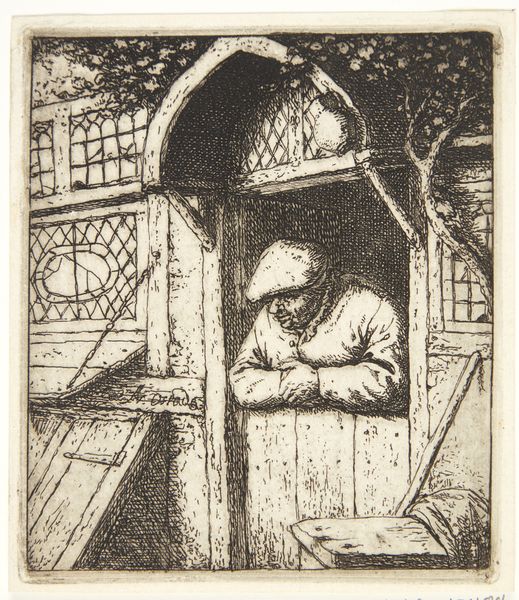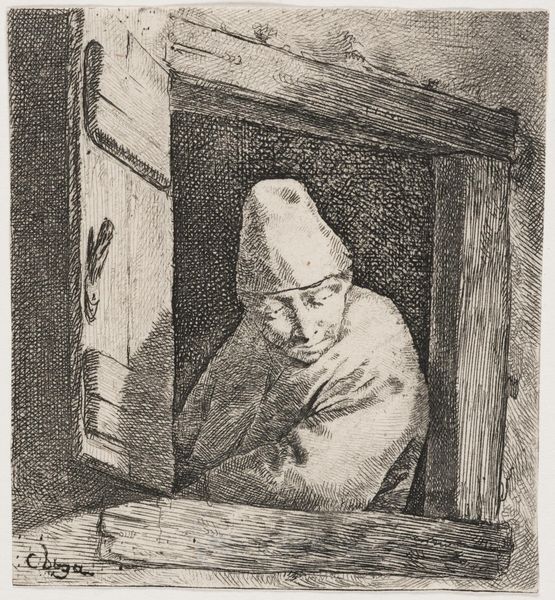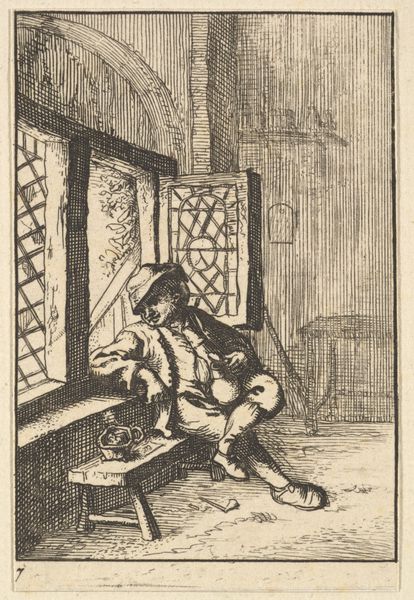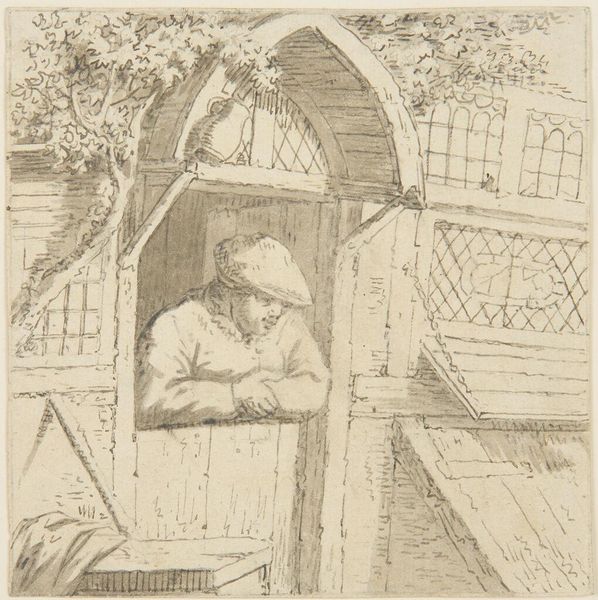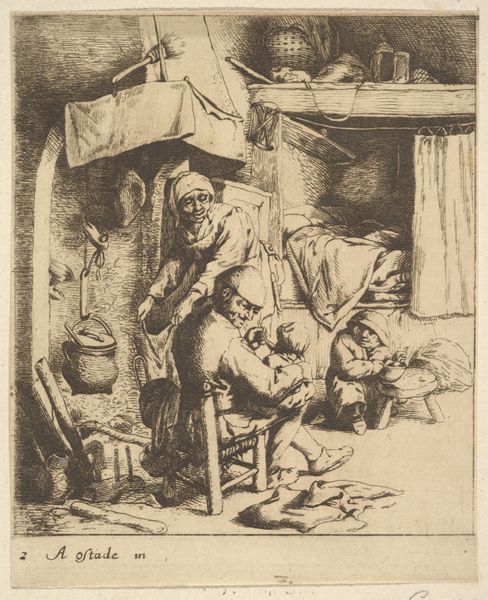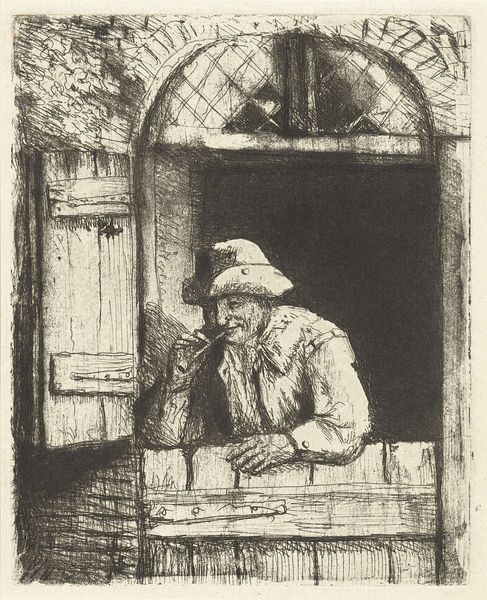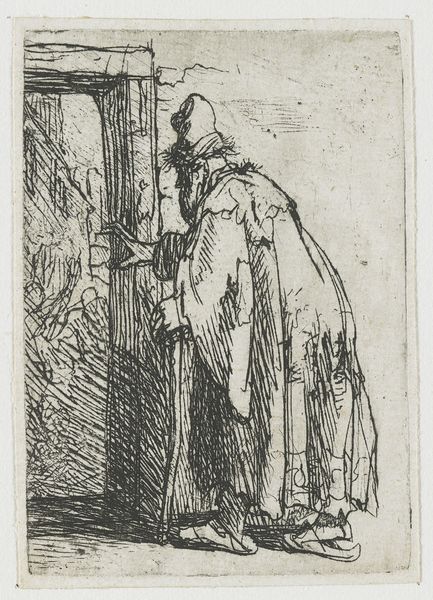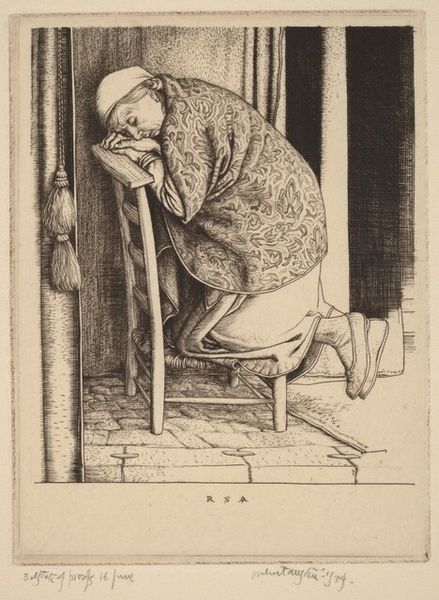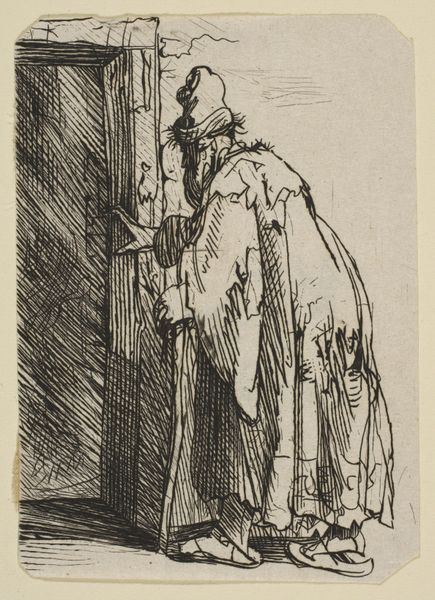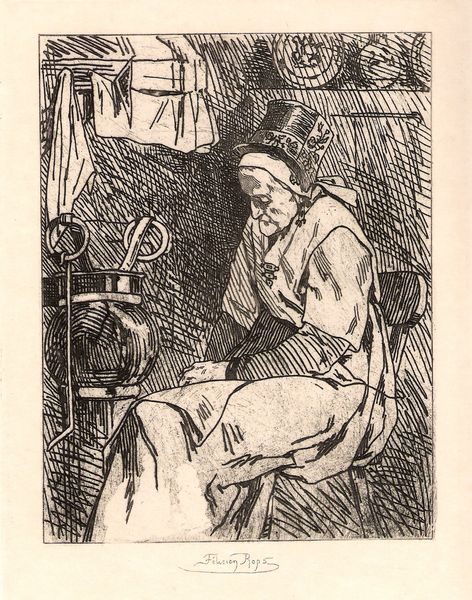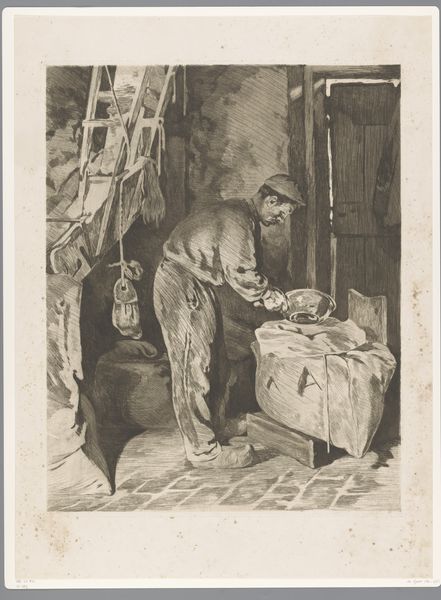
drawing, print, etching, intaglio
#
portrait
#
drawing
#
ink drawing
#
baroque
# print
#
etching
#
intaglio
#
landscape
#
figuration
#
genre-painting
#
realism
Dimensions: Sheet: 4 3/4 × 3 15/16 in. (12 × 10 cm)
Copyright: Public Domain
Adriaen van Ostade made this etching, "Peasant," in the Netherlands sometime in the mid-17th century. The image presents a man, presumably a member of the peasantry, leaning out of a window. In its time, the Dutch Republic was unique for its art market and the range of subject matter that was considered appropriate for art. Unlike other European countries, the Dutch Republic was neither a monarchy nor particularly religious. Instead, it was governed by a wealthy merchant class, and the art market catered to them. Although the Dutch still produced religious and historical paintings, they were also interested in secular subjects such as landscape, still life, and scenes of everyday life, called genre paintings. Van Ostade made many paintings and prints of peasants. As art historians, we might want to know whether he was accurately depicting the life of peasants or was satirizing them for the amusement of his middle-class clientele. By looking at his other works and those of his contemporaries, as well as historical documents about the peasantry, we can develop a clearer understanding of this artwork and its place in Dutch society.
Comments
No comments
Be the first to comment and join the conversation on the ultimate creative platform.
